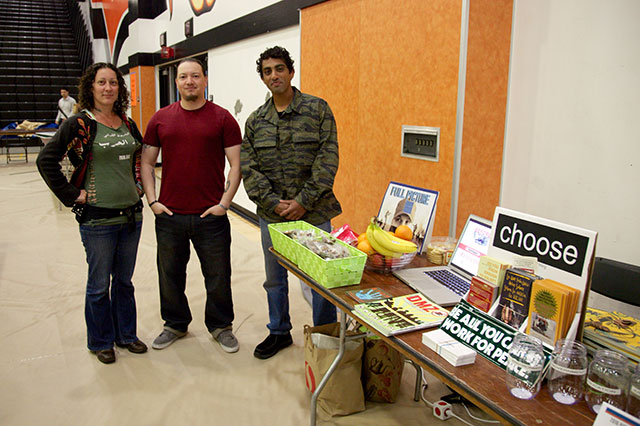 Draft registration is one of the ways that all young men (and possibly soon young women as well) have to interact with the military and think about their relationship to military “service”.
Draft registration is one of the ways that all young men (and possibly soon young women as well) have to interact with the military and think about their relationship to military “service”.
Almost all male U.S. residents, regardless of their citizenship, are supposed to register with the Selective Service System (SSS) when they reach age 18, and report each change of address to the SSS until they turn 26. The SSS maintains and regularly tests contingency plans for a general draft of young men (based on the current SSS list of registrants) and/or a separate “Health Care Personnel Delivery System” of men and women up to age 44 in 57 medical and related occupations (based on professional licensing lists). These plans could be activated at any time that Congress decides to reinstate either or both forms of a draft.
The SSS has trained volunteers in every state and county to serve as local draft boards and judge claims for exemption in the event of a draft, such as requests by draftees to be classified as conscientious objectors and allowed to perform non-combatant or alternative non-military service. Guidance counselors or other volunteers in some schools have also been deputized as SSS registrars.
Few young men comply fully with the draft registration law. Knowing and willful refusal to comply is a crime, but nobody has been prosecuted for draft resistance since 1986. To convict anyone of draft resistance, the government would have to prove that they knew they were required to register. This would be difficult unless someone has told the government, or said publicly, that they are deliberately refusing to register. In practice, there is no penalty for late registration, as long as you register before your 26th birthday, and no attempt at all to enforce the address change notice requirement. Many, perhaps most, induction notices sent to the addresses in SSS records would be undeliverable, or would be delivered to registrants’ parents’ homes (or former homes), rather than to the intended draftees.
Most young men who register with the SSS do so only when it is required as a condition of some other Federal or state government program. Men who haven’t register for the draft are ineligible for Federal student financial aid, Federal jobs, and some other Federal benefits. In some states, men of draft age are required to register with the SSS in order to obtain a driver’s license, or are automatically registered with the SSS (sometimes without even realizing it) when they get a driver’s license. Male immigrants of draft age must register with the SSS before they can be naturalized as U.S. citizens.
In 1981, the Supreme Court upheld requiring only men and not women to register for a draft. The court based its decision on deference to the military policy which, at that time, excluded women from combat assignments. Now that this policy has changed, it is likely that continued registration of men but not women will be found unconstitutional. Congress will soon have to decide whether to expand draft draft registration to young women as well as young men, or to end draft registration entirely.
Lawsuits against male-only draft registration are working their way through the courts. Meanwhile, Congress is conducting its most serious debate about the draft and draft registration in many years. Different bills have been introduced in Congress that would extend draft registration to women, end draft registration entirely and abolish the SSS, or attempt to restore the previous exclusion of women from military combat assignments and preserve male-only draft registration. Simlar provisions have been included or proposed for inclusion in other larger bills including the annual National Defense Authirzation Act. Any of these bills could be taken up for debate and vote at any time, possibly with little further warning.
NNOMY members and other organizations and individuals are working to:
Urge Congress to end draft registration – Don’t extend it to women (PDF)
Links:
Documents:
Articles on the Web:
##
Revised 09/09/2018
 "Excuse me, are you saying negative things about the military?"
"Excuse me, are you saying negative things about the military?"

 On a Wednesday afternoon last month, a group of gray-haired women with canes and Styrofoam guns lined the streets outside the New York City Department of Education’s headquarters in Brooklyn. “Get the military out of our schools!” they shouted, capturing pedestrians’ attention. “No more JROTC!” These were the courageous women of the Granny Peace Brigade, and they were there to protest what they see as the militarization of the city’s public schools.
On a Wednesday afternoon last month, a group of gray-haired women with canes and Styrofoam guns lined the streets outside the New York City Department of Education’s headquarters in Brooklyn. “Get the military out of our schools!” they shouted, capturing pedestrians’ attention. “No more JROTC!” These were the courageous women of the Granny Peace Brigade, and they were there to protest what they see as the militarization of the city’s public schools.






